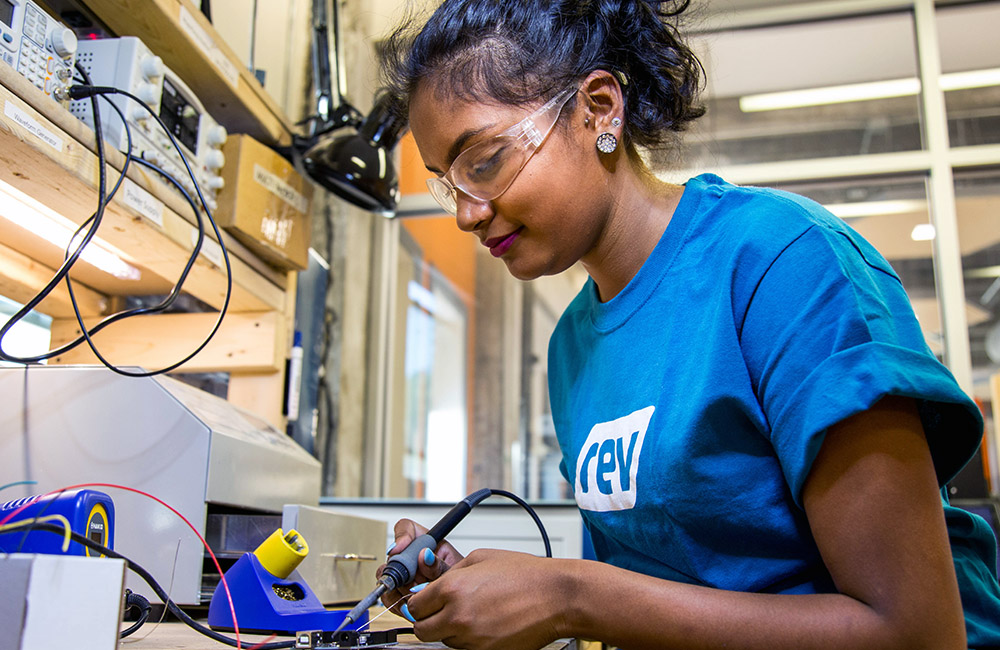
How to Turn Your Idea into a Product: The Prototyping Stage
Once you have discovered an amazing idea for a product, and after undertaking significant customer discovery, the next step is to create a prototype of that product—a working model to determine if it is something that can actually be built, solve a customer problem or address a customer need, and ultimately be scaled for manufacturing.
After completing your first prototype, it is important to get it into the hands of potential customers as quickly as possible so you can confirm there are people who want your product and are willing to pay for it in the market.
Ken Rother, Director of Rev: Ithaca Startup Works and Rev’s Hardware Accelerator programming, which includes the Prototyping Hardware Accelerator and Manufacturing Hardware Accelerator, shares his thoughts on the importance of developing a successful prototype.
Why should you make a prototype?
Prototyping is crucial for determining if what you are creating makes sense. It helps you understand if your innovation is feasible—Can you actually make what you are trying to make?—and whether it is desirable—Will your customers pay money for it?
The most crucial step in prototyping is when you have created your first working prototype and you are able to put it in the hands of a potential customer. Having the customer touch and interact with your prototype is a pivotal moment, because up until then you are just focused on its technical feasibility: “Will this product work?” When the customer starts testing a prototype, you are able to focus on bigger questions like “Am I building something that people actually want?” and “Does this product sufficiently address a customer pain point or need?” Obtaining the answers to these questions is crucial to moving forward.
How do you make a prototype?
Most entrepreneurs build their very first product models out of materials they have at home. Then, when they are ready to build a model that actually works and is ready to be tested by potential customer, they begin prototyping.
Entrepreneurs today have an amazing advantage when it comes to prototyping. Due to the emergence of new technologies and tools, such as 3D printing, that make prototyping easier and more economical, individual entrepreneurs can now affordably access the resources needed to conduct prototyping—before this was mostly limited to large companies and corporations that could afford to do professional prototyping. There are free prototyping accelerators that can guide you through the process, provide you with the tools you need, and give you coaching and mentorship along the way to help you launch your startup.
How do you know if your prototype is successful?
A successful prototype is one that can teach you something about how your product can be improved.
When we make prototypes, we are always making assumptions about how a customer will engage with a product—how they might hold it, how bright or loud it should be, or how heavy or big it should be. We need to test these assumptions with each version of our prototype in order to learn how to create a better and more desirable prototype each time.
When you hand a prototype to a potential customer, you shouldn’t ask them “What do you think?” because then you are asking them to act as designers, and not customers. Instead, you should simply ask them to use the prototype and observe how they use it to determine how intuitive and easy it is for them to naturally engage with.
What do you do after creating your prototype?
Startups commonly hit a roadblock when they transition from creating testable prototypes to prototypes intended for mass production—the point at which they need to incorporate materials and processes for manufacturing.
In the past, the people responsible for manufacturing products also handled product design, so products ended up on the market that didn’t always look good. Today, designers are eager to build prototypes and create beautiful products, but they need a lot of help when it comes to translating their prototypes into something that utilizes materials and processes for commercial production.
In the Rev: Ithaca Startup Works Hardware Accelerator, we worked closely with a startup that was building a cigarette carton capable of tracking the number of times a user opened the carton and this data was synched to an app on a user’s phone. They made a great prototype in our lab using off-the-shelf electronics, but when it came time to manufacture it at scale, the materials they needed to fit the size of their device were too cost-prohibitive, so they ultimately had to abandon the project.
Successful startups know how to make the leap to manufacturing—they are able to figure out how to recreate their prototype to match their industry’s standards for manufacturing materials and processes. There are numerous tutorials available to help entrepreneurs build a prototype in a design shop or lab, but there aren’t a lot of resources available to help startups evolve their prototype to be production ready. One way that Rev: Ithaca Startup Works decided to help startups at this critical point in their product development was by launching a second phase of our hardware accelerator that walks entrepreneurs through the process of preparing to manufacture their product.
